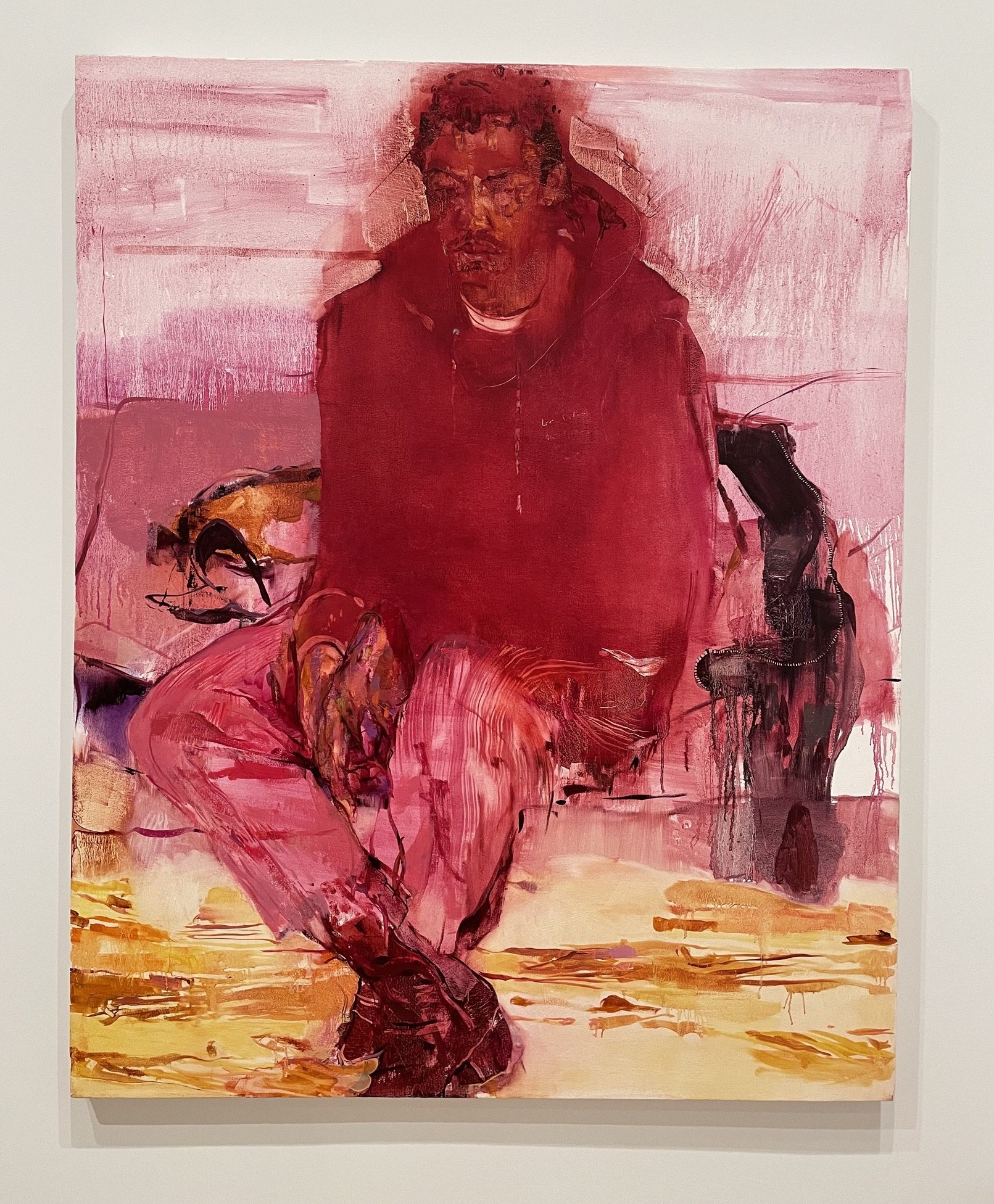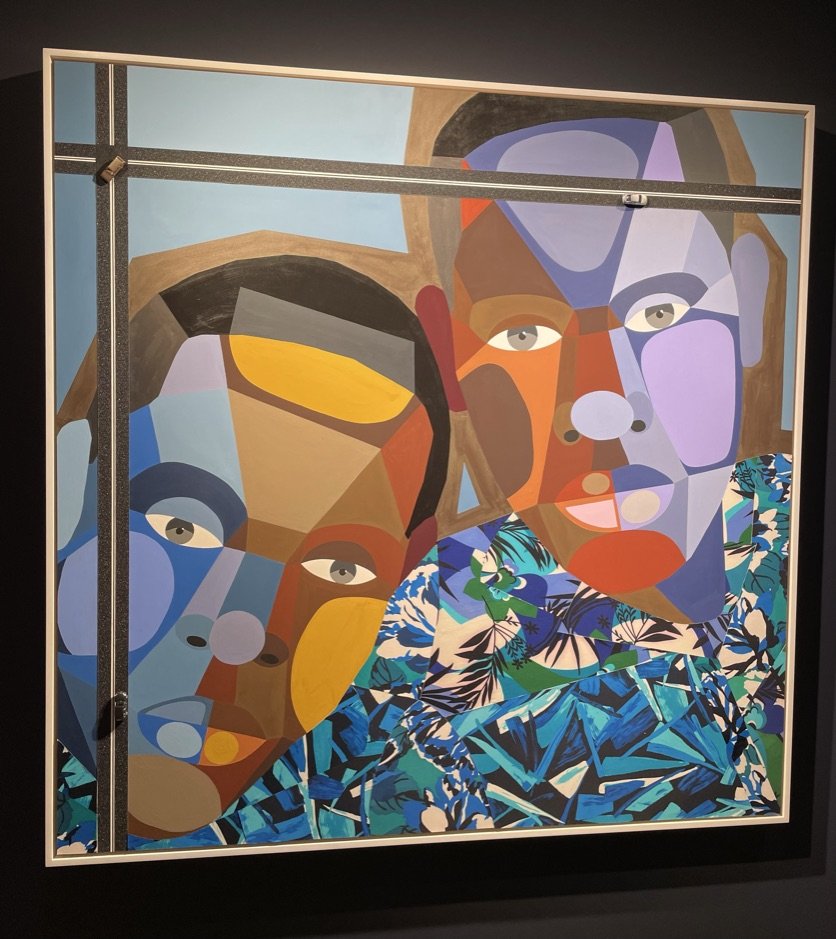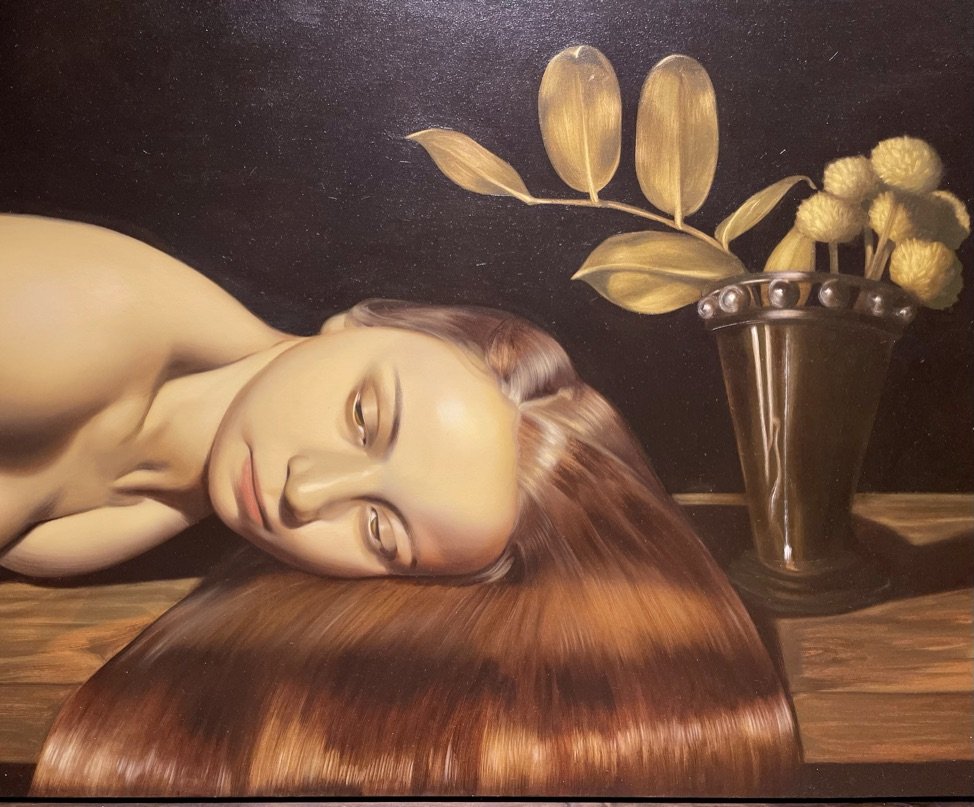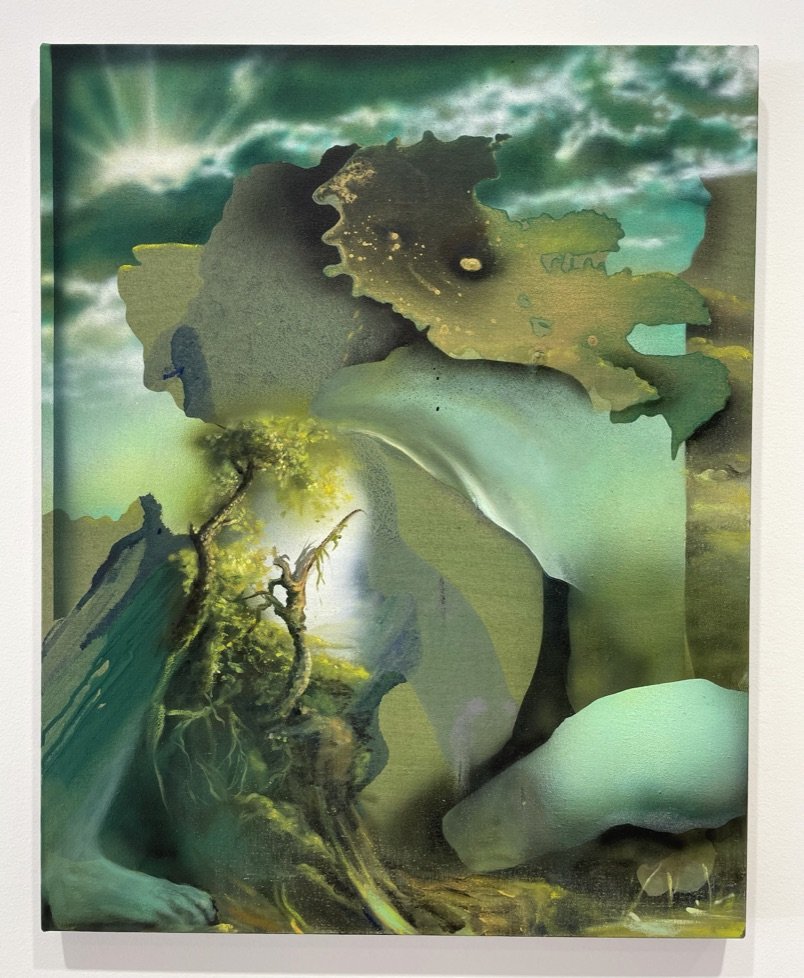What I Am Seeing Right Now
By Warren Winegar
I get to see a lot of art: paintings, sculpture, works on paper and everything in-between. As a professional Art Advisor, I am lucky enough to attend art fairs all around the world each year. I am often on the road going to franchises such as Art Basel’s fairs in Switzerland, Paris, Miami Beach, and Hong Kong; Frieze’s editions in London, Los Angeles, and New York; stand alone fairs like Untitled in Miami Beach, Expo Chicago, and ARCO Madrid; and many others. Indeed, the prevalence of art fairs translates into at least one major global fair happening every month, and often it is more.
In my work with The Center for Latter-day Saint Arts we frequently discuss the many niches and areas that constitute the current art market. I am often asked, “What are you seeing right now?” My answer is never straightforward and often changes to adapt to the audience I am addressing. I was asked by The Season’s Editorial Board this exact question and therefore will share some of what I am seeing in the context of readers of this publication.
I have chosen to focus on three areas that are dominant in Contemporary Art: the figure, surrealism, and textiles and fiber. Some of the ideas I am sharing have been in play for several years. Some are not earth-shattering. Some might be brand new. I could have chosen any number of artists to illustrate these areas; I just happened to choose these. Through it all, this is one perspective that reflects how I am connecting the dots.
The Figure
One could argue that the human figure is among the oldest subjects of paintings and drawings in art history. The past several years have brought a lot of new faces and voices to canvases, depicting figures and telling a broader range of stories. This has been building over more than a decade and has become more mainstream particularly in the past five years. This movement is being led by many artists of color coming from various parts of the world. Interestingly, the wide use of the color wheel in depicting skin tone, light and shading that many artists are employing right now is helping us to see the human form in different ways. Reminiscent of Matisse’s portraits from the early 20th century, with subjects’ faces striped with green, red, and a myriad of other colors, these emerging painters cause viewers to really look at the structures anew. Those audacious moves of the early 20th century helped set the stage for contemporary painting today.
Figure 1
Jennifer Packer
The Body Has Memory, 2020
Medium and dimensions not disclosed
Note: All photographs were taken by and are courtesy of Warren Winegar
The artist Jennifer Packer [see Figure 1] is a great example of this. She had show at the Whitney Museum of American Art in New York that closed in April 2022 that I encouraged everyone I knew to go and see. Its title was The Eye Is Not Satisfied with Seeing and it was such a gorgeous assemblage of paintings. Packer uses a range of colors, often reds and pinks, to depict her sitters in soft, soulful and solitary moments. Her brush is heavy in gesture but light in its depiction.
Figure 2.
Robert Peterson
All My Life, 2022
Oil on canvas
48 x 72 inches]
I saw Oklahoma-based Robert Peterson’s All My Life [Figure 2] at Untitled Miami Beach in 2021 and the image has stayed with me. Peterson brings in such a range of blues and grays to accentuate the skin and muscle tone of his subject. For me, this recalls certain Impressionist paintings by the likes of Manet and Renoir, where close inspection reveals a multitude of colors in the skin tones. The subjects could not be more different between these two camps, each a symbol of its own time and place, yet both share the shades of blue to be complete. While I cannot say what might have been his inspiration for this painting, Peterson is certainly among those showing new, interesting, and innovative ways of interpreting skin.
Figure 3.
Derrick Adams
Figure in the Urban Landscape 36, 2019
Acrylic, graphite, ink, fabric collage, grip tape and model cars on wood panel
60 x 60 inches
One of my favorite artists working today is Derrick Adams. Adams is truly a bright light in the arts orbit at the moment. Across his work, his unique style evokes joy amidst dense storytelling. One of his signature stylistic elements are faces composed of facets, each employing individual colors or tones. He also incorporates a wide use of collage through photography, textiles, or other materials. In Figure in the Urban Landscape 36 [Figure 3], Adams has attached small toy cars as a mechanism of storytelling for this series of paintings about traveling using the Greenbook. His most recent show closed a few weeks ago at The FLAG Art Foundation in New York and is wholly worth seeing online.
Surrealism
Figure 4.
Anna Weyant
Summertime, 2020 (detail)
Oil on canvas
30 x 40 inches
Within the realm of figuration is work that crosses between another area for discussion, which is a revived interest in the art of the surreal. Summertime [Figure 4], by California-based Anna Weyant, sold at Christie’s auction house last year and is representative of this other strand of detailed, realistic painting. At first glance these paintings seem almost traditional, but upon further inspection the mysterious elements begin to emerge. They beg questions. They incite responses.
Figure 5.
Dorothea Tanning
Title not provided, Circa 1960
Oil on canvas
Approximately 40 x 49 inches
There is not always a clear path to understanding why some trends or movements start, but they typically happen organically or are event driven. In art history in particular, all things build upon each other. As artists look at each other’s work, they bring their own new addition or perspective to what they see. Many will follow on or expand in their own vein.
Much of art’s historical cannon has been revisited over the past twenty years by academics and others, and this has brought in fresh eyes to look at makers and movements. Two seminal events took place in 2022 that solidify the moment for Surrealism of the past and its continuation in the present. First was the 2022 Venice Biennale titled Milk of Dreams, which brought the past and the present together in a compelling presentation. Second was an amazingly comprehensive exhibition at The Metropolitan Museum of Art called Surrealism Beyond Borders, which brought a survey view of the movement to fruition on the broadest scale. Along the way, artists such as Dorothea Tanning [see Figure 5], whose talents were largely overlooked in their lifetimes, are now seeing a lot of excitement and inclusion back into the dialogue. Certainly their influence is contributing to artists working today.
However, there are key differences in work that is being created today as opposed to times past. One of those differences is more practical than philosophical: technology. The ways that many artist’s work today with all sorts of computer programs and digital capacities allows them to play with the morphing of objects and backgrounds in ways never before attainable. It is less about philosophy, as with the first Surrealists, and more about the range of abstraction and the influences that technology has on our world today. Surrealism 2.0, if you like, seems fit for our times. Can anyone really say that the changes to our world during the pandemic were not surreal? While these ideas have been developing for several years they have caught on with makers today. Artists–who inherently see the world differently from most people–grappled with how to interpret what was going on around them, creating works that might not make sense on the surface, but that make a whole lot of sense in practice. Aspects of Surrealism also lend themselves to elements of creation and leaning into a dreamlike state where the transit of ideas and inspirations can pass and flow.
Annie Lapin
A. A Lie A Truth A., 2022
Oil, acrylic and charcoal on linen
30 x40 inches
Looking at the work of a young Los Angeles-based painter Annie Lapin [see Figure 6] gives us glimpses of the liminal space in between the known and an unknown world. Vivid colors and ethereal light contribute to the desire to mentally go further into this landscape.
Figure 7.
Firelei Baez,
Painted in 2021
Oil on canvas
Dimensions not disclosed
The same could be said for Firelei Baez of the Dominican Republic [see Figure 7], whose fiery bodies and range of forms, both known and highly stylized, hover in spaces that are not always clearly defined.
Textiles and Fiber
Figure 8.
Sheila Hicks
Lianes, 2021
94 x 72 x 4 inches
Historically speaking, sewing, needlepoint, weaving, and anything having to do with fabrics and fibers have been considered women’s work. Much of it was not considered a high art form until well into the latter half of the 20tth century. While this article is not seeking to relitigate or defend past pretenses, it is clear by the sheer volume of artists across genders that are working in these mediums that a new classification is due.
Pioneers in this field such as Paris-based Sheila Hicks are finally getting the attention and prominence they deserve. At 88 years old, Hicks is busier than ever with so much demand for her work amongst public institutions and private collectors. Her Lianes [Figure 8] is a composition of individual cords of wool or linen and bound with silk threads that are grouped together and hung on a rod. As an expert colorist and great visionary blending age old techniques with modern thinking, her influence is far and wide.
Figure 9.
Igshaan Adams
Onder die Derde Laag (under the third layer), 2021
Wood, painted wood, plastic, glass, stone and precious stone beads, polyester and nylon rope, gold and silver chain and cotton twine
80.32 x 69.29 inches
Weaving is not exclusive to women as we see in the Cape Town, South Africa, based Igshaan Adams, who is taking aspects of the traditional weaving he grew up around and expanding the range of materials and scale—often monumental—to make objects that are very contemporary and infused with captivating new meaning [see Figure 9].
Figure 10.
Billie Zangewa
Sweetest Devotion, 2021
Silk collage
53.9 x 41.7 inches
The idea that fabrics and sewing can be as flexible as paint is another new dynamic element to contemporary art. Complex compositions using a broad range of silks bring lovely, pictorial pieces that shimmer and tell intimate stories in the work of Billie Zangewa. In Sweetest Devotion [Figure 10], the artist reacts to the fabrics themselves and sometimes the shapes that she is presented with in creating her cozy glimpses of family life.
Figure 11.
Hangama Amiri
Still-Life with Dressing Table, 2021
Chiffon, cotton, muslin, silk, polyester, inkjet print, tie-dye fabric, Ikat print fabric, color pencil on fabric
43 x 49 inches
Afghani born Hangama Amiri [see Figure 11] uses a wide variety of fabrics and textures along with custom printed pieces when creating her compositions, which are imbued with longing and nostalgia for another time and place. Her work is deeply feminine and the painterly planes she achieves through mixing her mediums make them very inviting and tactile. You can learn more about her work in a current exhibition at The Aldrich Contemporary Art Museum in Ridgefield, Connecticut.
This summation of a few movements in the current contemporary art world, and a fraction of the many artists whose talent and vision exemplify them, is only one person’s view. There are many more artists, including those who affiliate or identify with The Church of Jesus Christ of Latter-day Saints, whose work is worthy of discovery and personal study. There is also relevance in all of these areas for those looking to expand their vision of the world, their own creativity and the breadth of expression that exists in the hands, hearts and heads of God’s children.
I am obsessed with art and beautiful things, and that I get to look at art as a profession is a gift. While I appreciate beauty I also welcome challenging subject matter and methods for the perspective they bring and the expansion of knowledge and compassion I experience by interacting with them. Time spent looking at and investigating art and artists can make the world a better and more understanding place. Art develops curiosity and respect for varied points of view. I hate to imagine a world where we did not have artist’s brains at work, helping amalgamate and distill the complexities and confusions as well as celebrations of the world. Their creations can capture emotions that we cannot express on our own and give voice to ideas that just need a nudge. So, go on. Learn something visually new.












